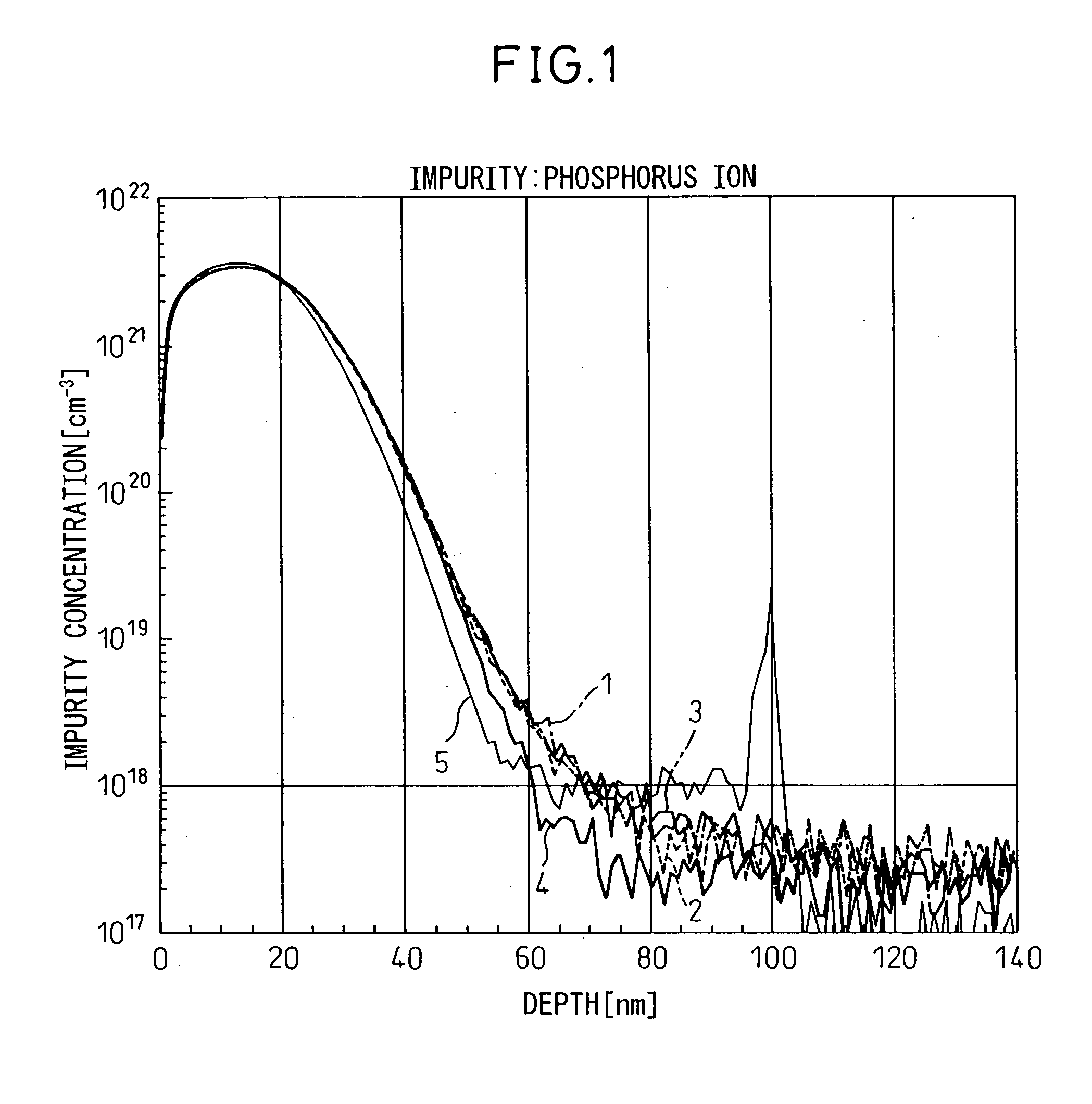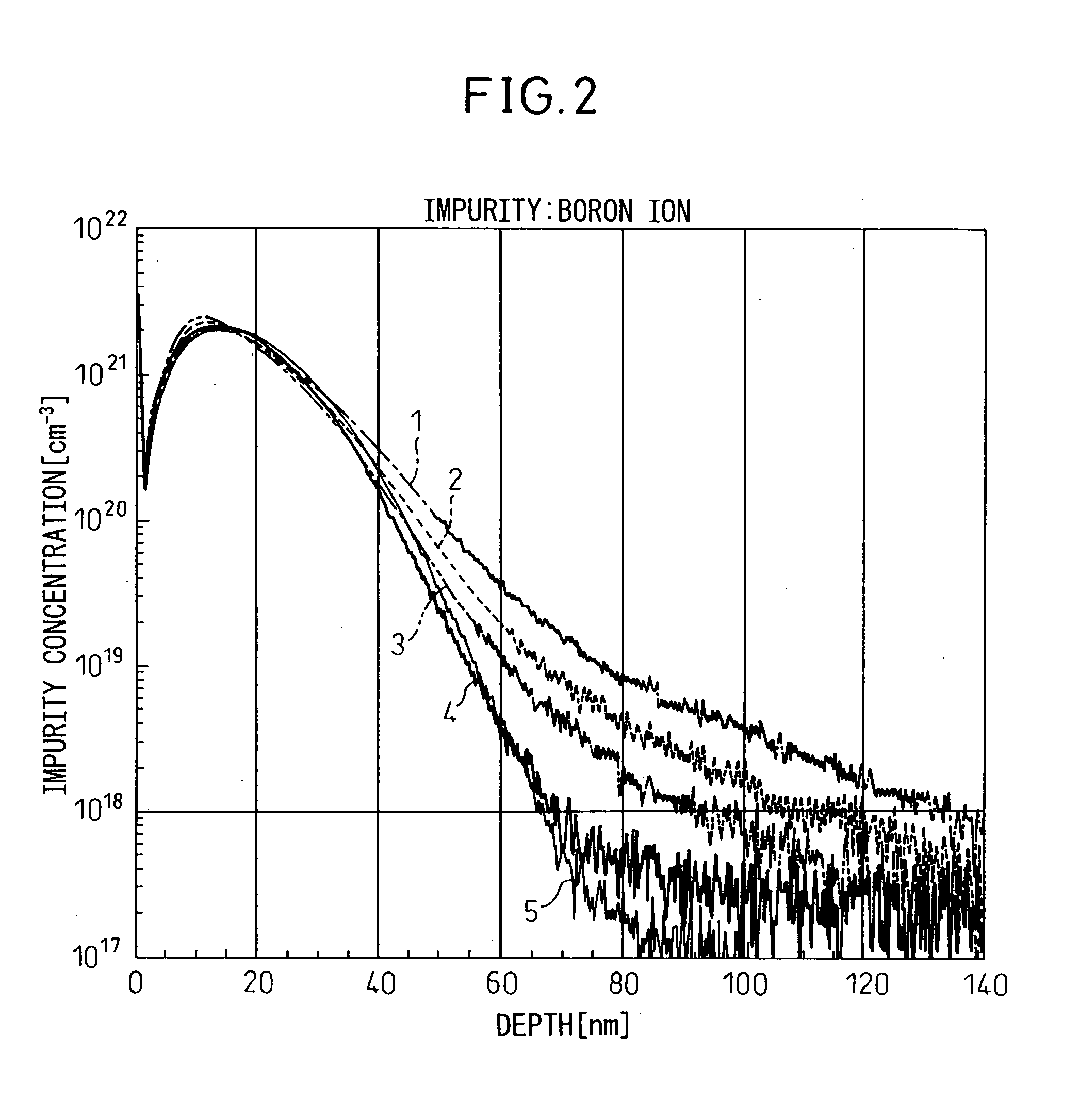Method of manufacturing CMOS semiconductor device
a technology of cmos and semiconductors, applied in the direction of semiconductor devices, electrical devices, transistors, etc., can solve the problems of cmos transistor performance dropping, performance drop of transistors, and insufficient activation of impurity implanted into polycrystalline silicon gate electrodes
- Summary
- Abstract
- Description
- Claims
- Application Information
AI Technical Summary
Benefits of technology
Problems solved by technology
Method used
Image
Examples
first embodiment
[0028] FIGS. 3A to 3F show the flow of steps of production of a CMOS semiconductor device according to the present invention.
[0029] A silicon substrate 1 isolated in advance by shallow trench isolation (STI) to form an nMOS region 2 and a pMOS region 3 is formed with a gate insulating film 4 to a thickness of 1.5 nm, then has deposited on it a polycrystalline silicon film 5 for formation of gate electrodes to a thickness of 120 nm (FIG. 3A).
[0030] Next, a mask 6 is formed so as to enable an impurity to be introduced into the polycrystalline silicon film 5 at the nMOS region 2, then Ge is introduced by an energy of 20 keV and a dosage of 1.times.10.sup.15 / cm.sup.2 to preamorphize the polycrystalline silicon film 5. Next, phosphorus (P) ions are introduced by an energy of 10 keV and a dosage of 1.times.10.sup.15 / cm.sup.2 (FIG. 3B).
[0031] Next, the mask 6 is removed, then the gate is annealed in a rapid thermal annealing system (RTA) at 900.degree. C. for 30 seconds in an oxygen atmosp...
second embodiment
Production of CMOS Semiconductor Device by Predoping nMOS Region and pMOS Region
[0035] FIGS. 4A to 4G show the flow of steps for production of the present invention.
[0036] A silicon substrate 1 isolated in advance by shallow trench isolation (STI) to form an nMOS region 2 and a pMOS region 3 is formed with a gate insulating film 4 to a thickness of 1.5 nm, then has deposited on it a polycrystalline silicon film 5 for formation of gate electrodes to a thickness of 120 nm (FIG. 4A).
[0037] Next, a mask 6 is formed so as to enable an impurity to be introduced into the polycrystalline silicon film 5 at the nMOS region 2, then Ge is introduced by an energy of 20 keV and a dosage of 1.times.10.sup.15 / cm.sup.2 to preamorphize it. Next, phosphorus (P) ions are introduced by an energy of 10 keV and a dosage of 1.times.10.sup.15 / cm.sup.2 (FIG. 4B).
[0038] Next, the mask 6 is removed, then the gate is annealed in a rapid thermal annealing system (RTA) at 900.degree. C. for 30 seconds in an oxyge...
PUM
| Property | Measurement | Unit |
|---|---|---|
| temperature | aaaaa | aaaaa |
| temperature | aaaaa | aaaaa |
| roughness | aaaaa | aaaaa |
Abstract
Description
Claims
Application Information
 Login to View More
Login to View More - R&D
- Intellectual Property
- Life Sciences
- Materials
- Tech Scout
- Unparalleled Data Quality
- Higher Quality Content
- 60% Fewer Hallucinations
Browse by: Latest US Patents, China's latest patents, Technical Efficacy Thesaurus, Application Domain, Technology Topic, Popular Technical Reports.
© 2025 PatSnap. All rights reserved.Legal|Privacy policy|Modern Slavery Act Transparency Statement|Sitemap|About US| Contact US: help@patsnap.com



